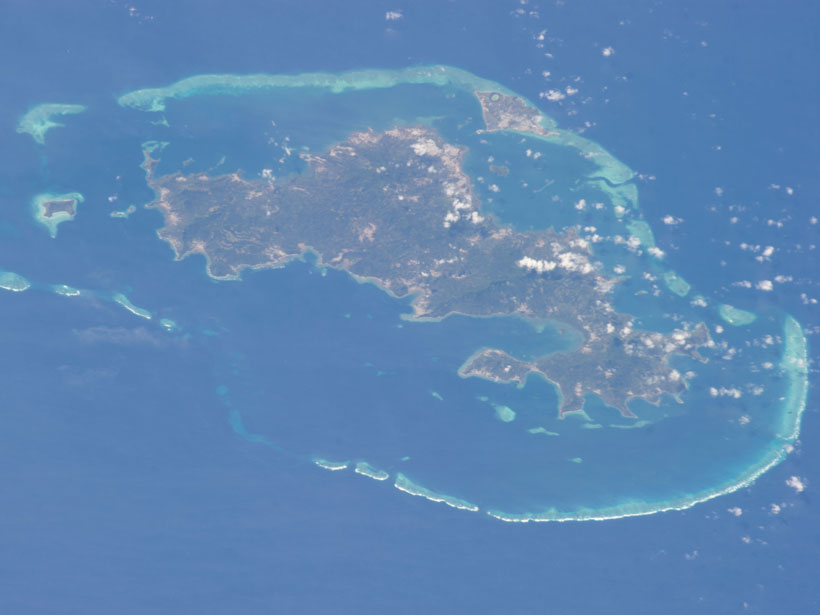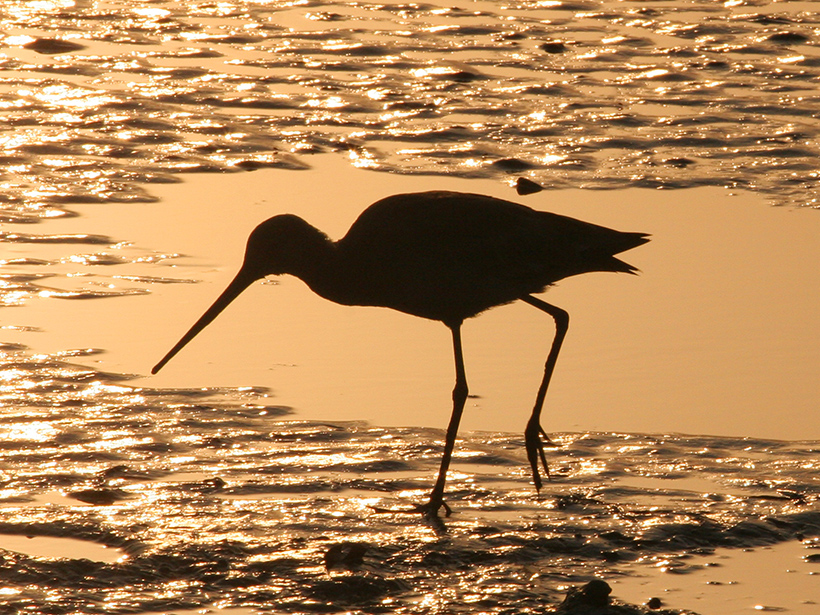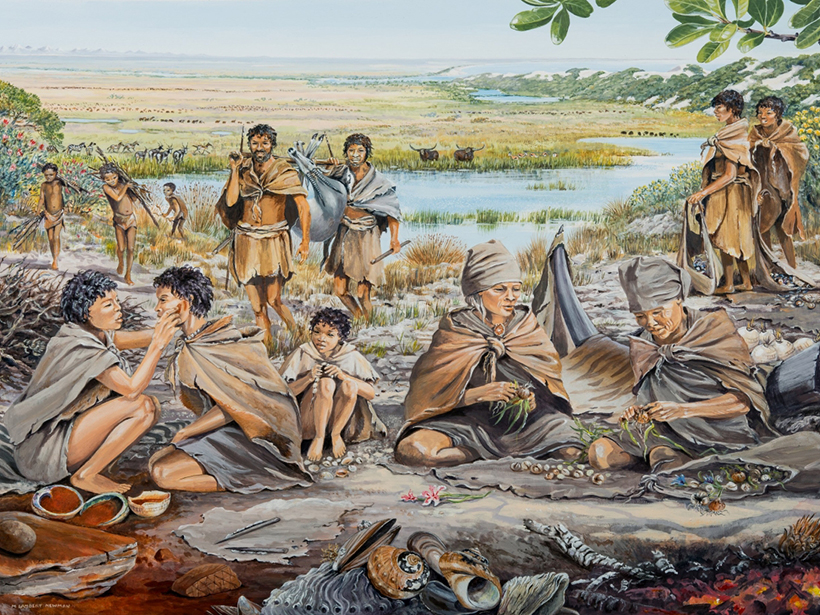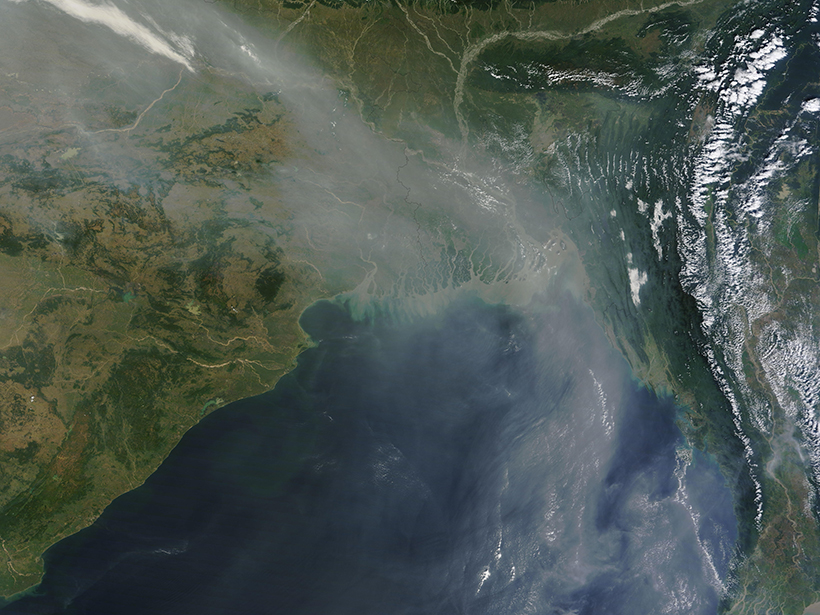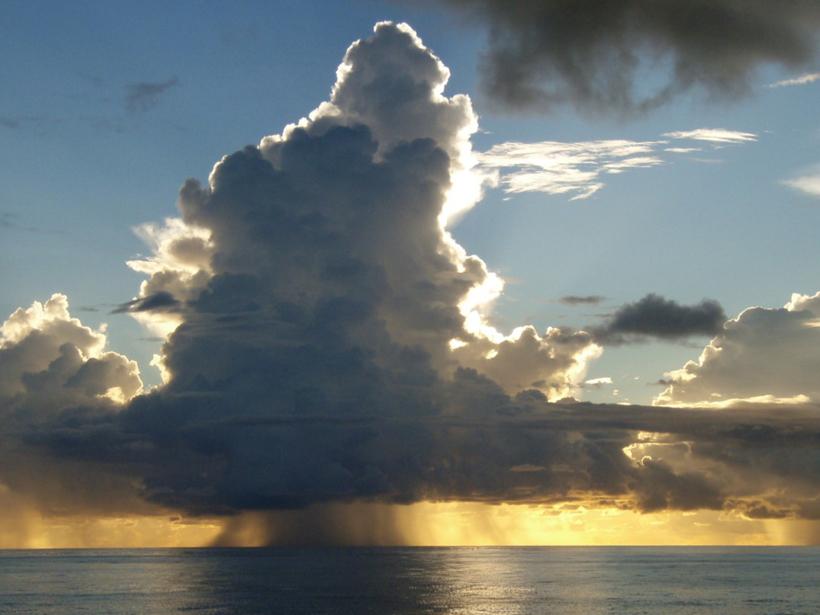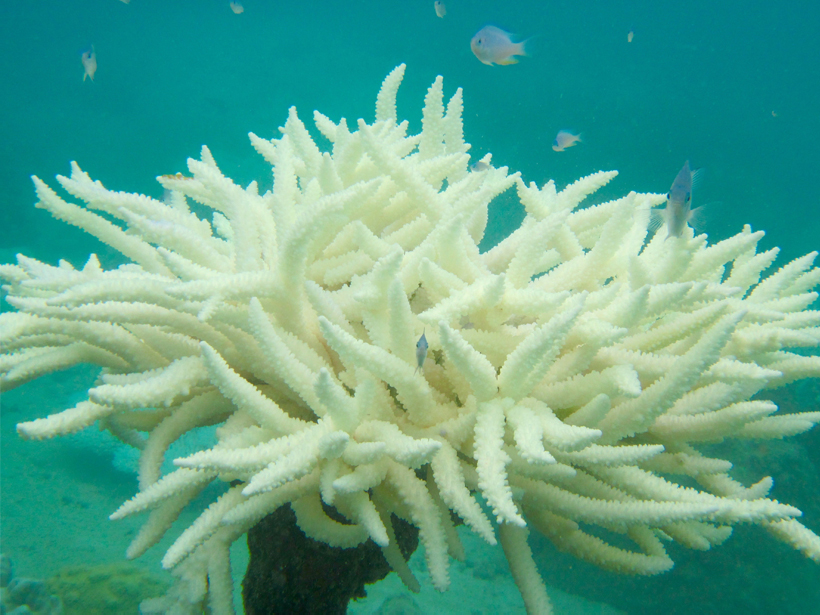Researchers suggest a magma chamber sits within an old submarine caldera structure that extends into the mantle. Nearby, a new underwater volcano emerged with a flurry of seismicity.
Indian Ocean
Tracing the Moisture That Nourishes the World’s Highest Glacier
Using data from weather stations on and around Mount Everest, scientists find that the Khumbu Glacier receives most of its moisture from the Bay of Bengal.
Human Activity Makes India’s Coastlines More Vulnerable
Researchers propose the creation of an anthropogenic vulnerability index to help guide conservation policy decisions.
A Lost Haven for Early Modern Humans
Sea level changes have repeatedly reshaped the Paleo-Agulhas Plain, a now submerged region off the coast of South Africa that once teemed with plants, animals, and human hunter–gatherers.
Earthquakes Reveal How Quickly the Ocean Is Warming
By timing sound waves set in motion by earthquakes, scientists have estimated that the Indian Ocean is warming by roughly 0.044 K per decade.
The Bay of Bengal and the Curious Case of the Missing Rift
In a classic detective story, clues from data new and old helped researchers reveal the puzzling chain of tectonic events that followed the Early Cretaceous split between India and Antarctica.
Mysterious Engine of the Madden‐Julian Oscillation
Understanding the fundamental physics of the Madden‐Julian Oscillation, a phenomenon that occurs over the Indian and Pacific Oceans, remains a challenge in tropical atmospheric research.
Search for MH370 Revealed Ocean Crust Waves
Efforts to recover the missing airplane produced high-resolution bathymetry of the southern Indian Ocean that raises new ideas about how ocean crust forms.
A Plate Boundary Emerges Between India and Australia
Bathymetric and seismic data point to a new plate boundary in a fracture-riddled zone beneath the northern Indian Ocean.
A Key to Coral Bleaching Events? Location, Location, Location
New research indicates that longitude, as well as warming waters, may be a key predictor of coral bleaching events.

